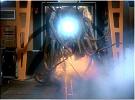Old Marine
Posts: 1
Joined: 9/5/2010
Status: offline

|
Responding to several Q&A re M4 Flame Tanks. I served with 1st Tank Battalion, 1st Marine Division, in Korea. I was a tank mechanic, later a turret armorer. I can speak to questions on organization, and the flame and gun tanks themselves.
Marine Tank Battalions have four "letter companies" (eg: A, B, C, D) of gun tanks. (Ours were post-WWII M46 & M46A1's, mounting 90 MM's). Our Hq Company (H&S Co.) had one platoon of M-4 flame tanks. They were the slab-sided version, with welded hull armor. If you watch "live" newsreels from WWII, you'll see that the flame tanks do indeed have both a flame tube and a gun tube. The gun was a 105mm, and the flame tube operated coaxially with the gun tube. The napalm for the flame tube was held in a large tank in the bottom of the hull. If I remember right, the 105 ammo was stored both in covered "bins" below the gunners' & Tank Commander's deck, with a few rounds for quick access in bins between the driver and "assistant driver" (front gunner).
The napalm was mixed in a special WWII vintage "Six-By" truck, slightly similar to a cement mixer truck. The napalm mix was a granular stuff, similar in appearance to ordinary fertilizer, and it came (as I recall) in small barrels. I also remember that mixing it was somewhat of an art; as it had to be thick enough to "stick together" when it was fired from the flame tube to spray as a steady stream and still have body when it landed on target; if it was too thin, it tended to just burn up in the air while after it was fired. There was an electrical igniter in the tip of the flame tube to cause the napalm to flame up. As I recall, we had only a couple of salty old Gunnery Sgt's from WWII who were allowed to mix the napalm. The quality and thickness of the napalm were critical in getting good range. This is a hazy memory, but it seems to me that about 40 - 60 yards was about all that a good mixture could reach, so it was a close-in business.
The turret was more cramped than the M-4 Gun tanks, due to the space required below the ammo bins for the napalm tanks.
It's true that we called them "Zippo's"; but that was because of their flame capability.
Our utility tanks (comm, dozers, flails, were all WWII M-4's. I cannot remember the series number, but we had flat-head Ford V-8 engines in all of ours. They looked almost identical to he old auto flat-head Fords from the mid-30's, with the coolant return exiting the head vertically, between the second and third cylinders. Incidentally, the flail tank mounted a 40's vintage flat-head Cadillac engine on the starboard side of the tank, just to spin the flail chains and balls.
As best as I can remember, all of our M-4's mounted the 105 mm; but we had a Korean Marine Tank Battalion on our right flank, and they all mounted the 76mm, which I think had much higher muzzle velocity and were more effective against armor and pillboxes, etc. Those Korean Marines were good, by the way!
I'm an old man now (approaching 80), and trying to remember things from a very long time ago, so there may be a few errors in the above, but there aren't a whole lot of us around who have been exposed to the old WWII flame tanks, and I thought this might be helpful to you.
God bless, and Semper Fidelis,
Jay (Formerly CPL, USMC)
|
 Printable Version
Printable Version














 New Messages
New Messages No New Messages
No New Messages Hot Topic w/ New Messages
Hot Topic w/ New Messages Hot Topic w/o New Messages
Hot Topic w/o New Messages Locked w/ New Messages
Locked w/ New Messages Locked w/o New Messages
Locked w/o New Messages Post New Thread
Post New Thread